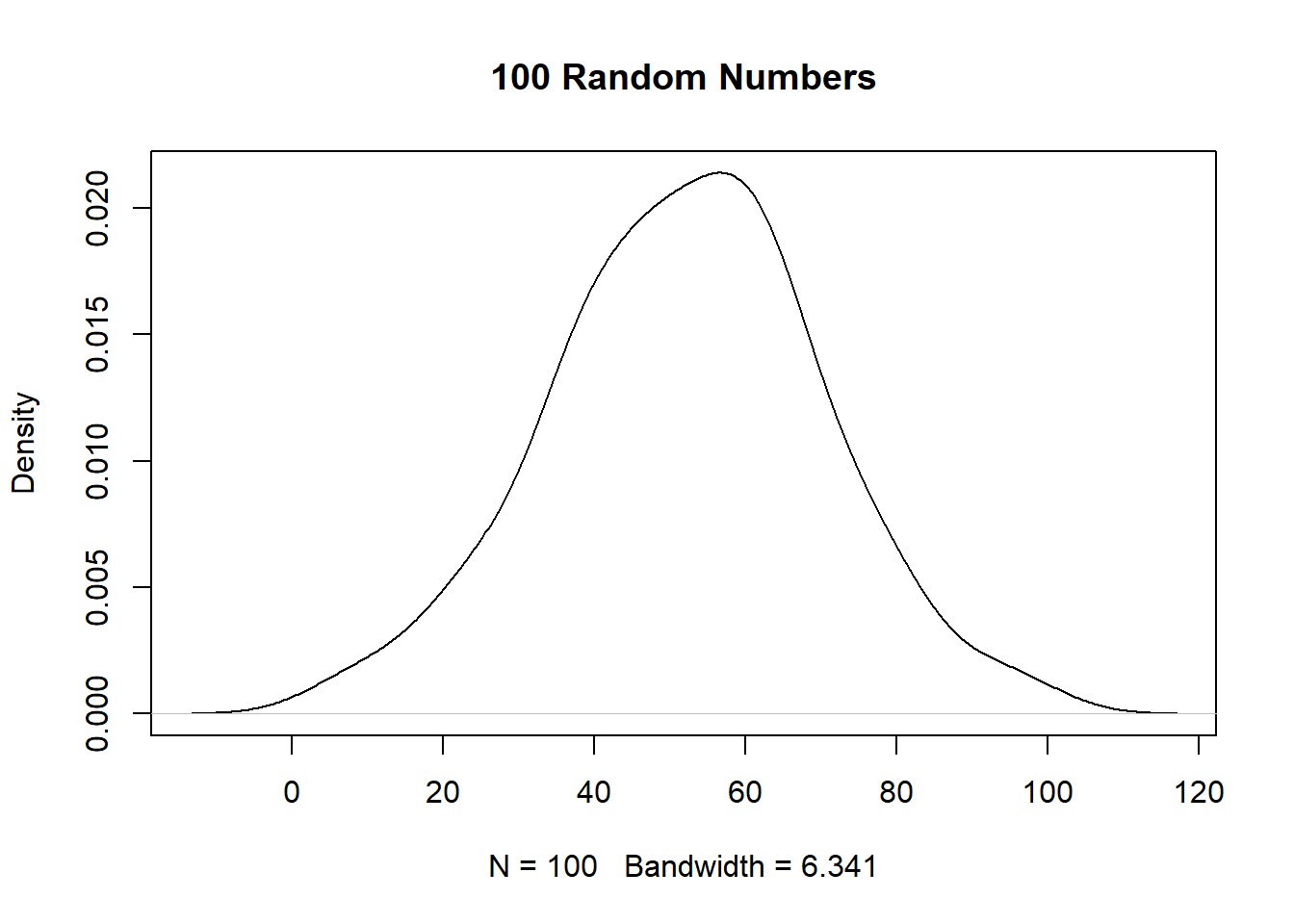7 Probability Functions
This chapter will primarily focus on the normal distribution functions in R.
7.1 Generating Random Numbers
To calculate random numbers in R based on a normal distribution, we can use the rnorm() function. By default, the mean and sd respectively are 0 and 1; but we can change these parameters as necessary.
set.seed(1) # Remember our random numbers
x <- rnorm(100, # 100 random numbers
mean = 50, # with a mean of 50
sd = 20) # and SD of 20.
plot(density(x),
main = '100 Random Numbers')
See more on plots in the Graphing chapter.
7.2 Sampling
We can take a random sampling of a vector with sample().
set.seed(1) # Remember our random values.
# 10 random numbers from
# a vector of 100 values.
sample(1:100, size = 10, replace = TRUE)## [1] 68 39 1 34 87 43 14 82 59 51For a dataset, we can do the following:
set.seed(1) # Remember our random values.
# Random 5 rows
mtcars[sample(1:NROW(mtcars), 5), ]## mpg cyl disp hp drat wt qsec vs am gear carb
## Pontiac Firebird 19.2 8 400 175 3.08 3.845 17.05 0 0 3 2
## Hornet 4 Drive 21.4 6 258 110 3.08 3.215 19.44 1 0 3 1
## Duster 360 14.3 8 360 245 3.21 3.570 15.84 0 0 3 4
## Mazda RX4 21.0 6 160 110 3.90 2.620 16.46 0 1 4 4
## Mazda RX4 Wag 21.0 6 160 110 3.90 2.875 17.02 0 1 4 4